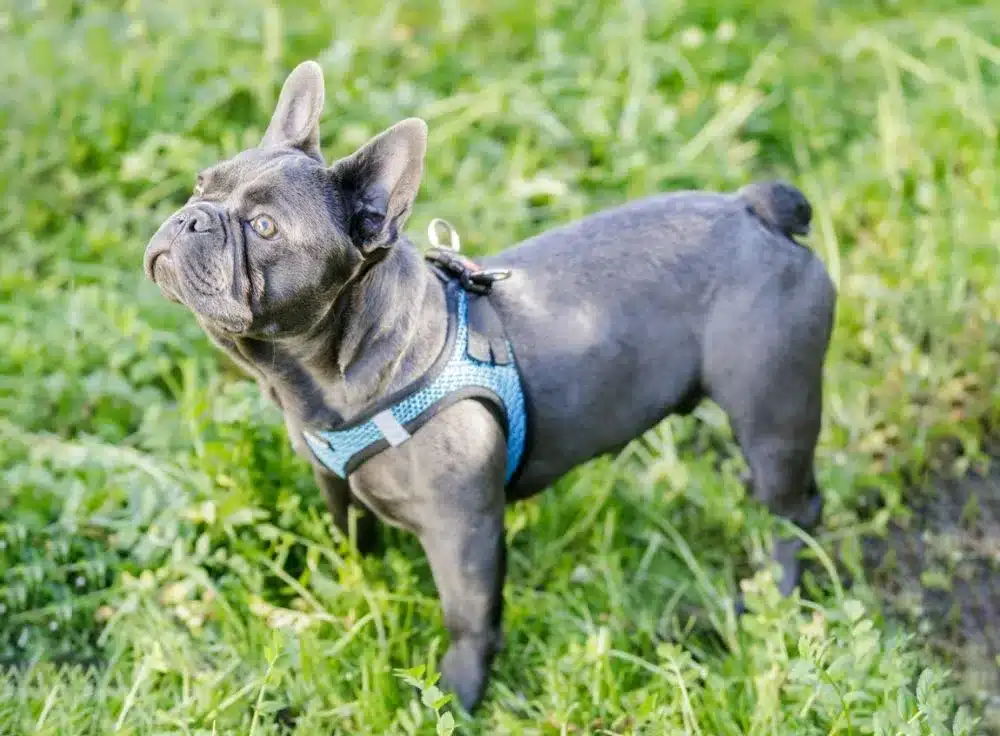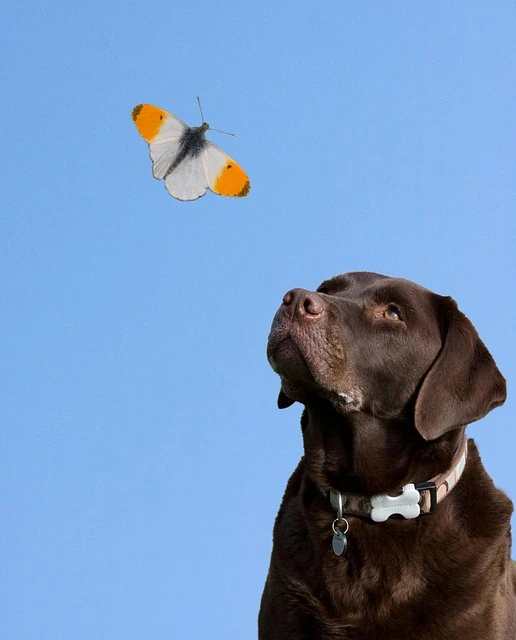
You know that moment when you walk into a friend’s house and their dog doesn’t even lift their head from the couch? Just opens one eye, gives you a look that says “oh, it’s you,” and goes back to sleep? That’s the magic of living with a truly lazy dog breed.
I’ve been around dogs my entire life, and let me tell you—there’s something incredibly peaceful about a dog who doesn’t think every doorbell ring is the apocalypse or every car that drives by needs a full security briefing. The laziest dog breeds are basically four-legged meditation teachers who’ve figured out that not everything requires immediate action.
Look, I get it. Social media is full of those hyperactive Golden Retrievers catching frisbees mid-air and Border Collies doing obstacle courses that would challenge Olympic athletes. But honestly? Sometimes you just want a dog who thinks the most strenuous activity of the day should be walking to the food bowl.
Table of Contents
What Actually Makes a Dog “Lazy”? (Spoiler: It’s Not What You Think)
Here’s the thing about lazy dogs—they’re not actually lazy in a bad way. They’re just… selective about their energy expenditure. Think of them as the efficiency experts of the dog world.
I remember visiting my aunt’s English Bulldog, Winston, who had mastered the art of strategic positioning. This dog could somehow sense when someone was about to sit down from three rooms away and would immediately relocate to claim that exact spot. Was he being lazy? Or was he just really, really smart about comfort optimization?
The Real Science Behind Couch Potato Dogs
The American Kennel Club talks about breed temperament being based on “natural predispositions,” but let me break that down in regular human terms: some dogs were bred to chill out. Seriously.
Take French Bulldogs—their ancestors were bred to sit on laps in French lace-making shops. Not exactly a high-cardio environment. Meanwhile, their flat faces mean they literally can’t breathe well enough for intense exercise anyway. Nature basically said, “You know what? Let’s make a dog whose job is to be comfortable.”
Compare that to a Husky, whose ancestors had to run across frozen tundra for miles. Different breeding = different energy levels. It’s not rocket science, but somehow people are still surprised when their Bulldog doesn’t want to go hiking.
My Personal “Lazy Dog” Reality Check
I used to think I wanted a high-energy dog. Then I dog-sat my neighbor’s Jack Russell Terrier for a week. By day three, I was googling “how to tire out a hyperactive dog” at 2 AM because this little maniac had already destroyed two tennis balls, rearranged my sock drawer, and somehow figured out how to open cabinet doors.
That’s when I realized: lazy dogs aren’t boring. They’re peaceful. There’s a huge difference.
Small Lazy Breeds: Masters of the Lap Takeover
French Bulldogs: The Snoring Champions

If you’ve never lived with a Frenchie, you haven’t experienced true comedy. These dogs snore louder than most humans, and they do it with such confidence that you start to wonder if they’re doing it on purpose.
My friend Sarah has a Frenchie named Gus who’s basically a 25-pound space heater with opinions. His daily schedule goes something like this: wake up reluctantly around 9 AM, grudgingly go outside for bathroom business, return immediately to the couch, nap until lunch, briefly consider playing with a toy, decide against it, nap until dinner, eat enthusiastically, and then return to the couch for the evening shift.
The funniest part? Gus somehow makes Sarah feel guilty when she has to move him. He’s mastered this look that says, “Really? You’re going to disturb my very important sleeping just to sit down?” And honestly, half the time she ends up sitting on the floor instead.
What Frenchies actually need: KONG Classic Dog Toy stuffed with treats. It keeps them occupied for hours without requiring any actual movement—perfect for dogs who think exercise should involve jaw muscles only.
English Bulldogs: Professional Furniture Warmers

English Bulldogs have turned stubbornness into an art form. I swear they have meetings where they discuss new ways to avoid doing anything that resembles exercise.
There’s this Bulldog at my local dog park named Meatball (yes, really) who figured out the perfect park strategy. His owner brings a camp chair, and Meatball immediately plants himself in the shade underneath it. Other dogs are running around, playing fetch, socializing—Meatball’s just chilling like he’s at a beach resort.
The best part is when other dog owners try to get their high-energy dogs to play with him. Meatball will look at them with this expression that clearly says, “Listen, buddy, I don’t run. I waddle with purpose when food is involved, and that’s about it.”
Bulldog survival gear: Coolaroo Elevated Pet Bed. These dogs overheat if they think too hard, so cooling beds aren’t luxury—they’re survival equipment.
Pugs: Small Dogs, Enormous Attitudes, Zero Athletic Ambition

Pugs are basically the class clowns who never grew out of being class clowns. They’re hilarious, but their idea of a workout is walking to the treat jar with intention.
I know a Pug named Pickles who’s developed this incredible talent for making humans feel guilty about everything. Want to go for a walk? Pickles gives you a look like you just suggested climbing Mount Everest. Need him to move off the couch? Suddenly he’s the most pathetic creature who ever lived and clearly cannot possibly relocate without suffering tremendous hardship.
But here’s the weird thing about Pugs—they’re actually really smart. They just use their intelligence for comfort optimization rather than showing off. Pickles has figured out exactly when his humans eat meals, knows which family member is most likely to share snacks, and can predict weekends vs. weekdays with scary accuracy.
The Royal Pekingese: Tiny Dogs with Emperor Complexes

Pekingese were literally bred to warm the laps of Chinese emperors, and they’ve never forgotten their royal heritage. These dogs approach exercise with the disdain of nobility being asked to do manual labor.
My groomer has a Peke named Chairman Meow (yes, a dog named after a cat—the irony isn’t lost on anyone) who refuses to walk on wet grass. Not “doesn’t like wet grass”—refuses. Will literally turn around and go back inside if there’s morning dew. The family had to install artificial turf in part of their yard just so this 12-pound diva would go outside.
For the royalty: FURminator Undercoat Deshedding Tool keeps their beautiful coats maintained during those mandatory grooming sessions—because even the laziest royalty needs to look the part.
Shih Tzus: The Zen Masters of Doing Nothing

Shih Tzus have achieved something most humans struggle with their entire lives: they’re completely content doing absolutely nothing. And they make it look like the most natural thing in the world.
I dog-sat a Shih Tzu named Buttons for a weekend, and this dog taught me more about relaxation than any meditation app ever could. Buttons had this routine where she’d find the perfect sunny spot in the morning, arrange herself just so, and then… that was it. That was her day. Occasionally she’d relocate if the sun moved, but it was always with this deliberate, mindful energy like she was performing an ancient ritual.
The funny thing is, when you’re around dogs like this, you start to question your own need to constantly be doing something. Like, maybe Buttons has figured something out that the rest of us missed.
Medium Lazy Breeds: The Goldilocks Zone of Lazy
Basset Hounds: Detectives Who’d Rather Not Detect

Basset Hounds are like that friend who’s really good at their job but would rather be retired. They have these incredible noses and could probably solve crimes if they wanted to, but mostly they use their detecting abilities to locate dropped snacks under furniture.
There’s a Basset at the dog park named Detective (his owner has a sense of humor) who’s mastered selective scent work. He can ignore every interesting smell in a five-mile radius, but drop a piece of hot dog and suddenly he’s Sherlock Holmes. The rest of the time? He’s usually found lying in whatever spot has the optimal combination of shade and people-watching opportunities.
What cracks me up about Bassets is how they’ve weaponized their sad faces. Detective can make you feel guilty about things you didn’t even do. Not sharing your sandwich? Suddenly you’re the worst human who ever lived, according to his expression.
Whippets: The 40-MPH Contradiction

Here’s the thing about Whippets that blows people’s minds—they can run faster than most cars drive through residential neighborhoods, but they’d rather spend 22 hours a day sleeping. It’s like having a Ferrari that prefers to be parked.
My vet has a Whippet named Zoom (again with the ironic names) who perfectly embodies this contradiction. Once a day, Zoom will suddenly decide it’s time for “zoomies” and will tear around the backyard like his tail is on fire for exactly three minutes. Then he’s done. Back to the couch, thank you very much.
The hilarious part is watching people’s reactions when they learn Whippets are lazy. “But they’re racing dogs!” Yes, Karen, they’re racing dogs who’ve figured out that racing is work, and work is for chumps.
For the speedster couch potatoes: K&H Pet Products Thermo-Snuggly Sleeper provides the heated luxury these reformed racers deserve during their 20+ hour daily rest periods.
Chow Chows: The Cat-Dogs Who Judge Your Life Choices

Chow Chows are basically dogs who wish they were cats but are stuck in the wrong body. They have this aloof, judgmental energy that makes you feel like they’re constantly evaluating your life choices and finding them wanting.
I know a Chow named Emperor (these owners really lean into the royal thing) who’s perfected the art of selective engagement. He’ll participate in activities that benefit him directly—food-related activities, primarily—and completely ignore everything else. Need him to come when called? He’ll consider it. Eventually. Maybe.
The funniest thing about Emperor is how he positions himself in the house. He always chooses spots where he can observe all the household drama while maintaining plausible deniability about caring. Like a furry, judgmental security camera that occasionally demands treats.
Large Lazy Breeds: Gentle Giants Who Think They’re Lap Dogs
Great Danes: The Gentle Giants with Delusions of Lap Dog Status

Great Danes are basically horses who think they’re Chihuahuas. The disconnect between their actual size and their self-perception is both hilarious and slightly problematic for furniture.
My neighbor has a Great Dane named Tiny (yes, everyone’s a comedian) who’s absolutely convinced he’s a lap dog. This 150-pound gentle giant will attempt to curl up on anyone’s lap with the confidence of a 15-pound dog. He’s also mastered the art of making himself look small and pathetic when he wants something, which is physically impossible but somehow he manages it.
The best part about Tiny is his exercise philosophy: why expend energy when you can accomplish your goals through strategic positioning and emotional manipulation? Need to go outside? He’ll stand by the door and sigh dramatically until someone notices. Want treats? He’ll position himself in the kitchen and look tragically underfed despite eating more food than most small children.
Saint Bernards: Alpine Rescue Dogs Who’d Rather Rescue Themselves from Exercise

Saint Bernards were bred to rescue people in the Swiss Alps, but modern Saints would rather rescue themselves from any activity more strenuous than walking to the food bowl.
There’s a Saint named Rescue (I’m starting to see a pattern with these names) at the local training facility who’s basically the anti-exercise poster child. During group walks, Rescue has perfected the “strategic lag” technique—he starts out enthusiastic, gradually slows down until he’s practically stationary, and then gives everyone this look like they’re the unreasonable ones for expecting him to keep moving.
What kills me about Saints is how they’ve maintained their helpful, rescue-dog personalities while applying them to completely different situations. Rescue won’t save you from an avalanche, but he will provide excellent emotional support during Netflix binges and is always available for therapeutic couch sharing.
Mastiffs: 200-Pound “Lap Dogs” Who Physics Can’t Stop

English Mastiffs are living proof that attitude trumps physics. These dogs can weigh more than most humans, but they’re absolutely convinced they’re perfectly sized for laps, couches, and any other furniture originally designed for much smaller creatures.
I volunteered at a Mastiff rescue for a while, and there was this guy named Goliath who’d somehow figured out how to make himself look small and pathetic despite being the size of a small pony. When potential adopters would visit, Goliath would immediately attempt to become a lap dog, apparently believing that if he couldn’t see them around his massive head, they couldn’t see him either.
The funniest part was watching new volunteers try to move him when he decided a particular spot was perfect for napping. You don’t move a Mastiff who doesn’t want to be moved—you negotiate. Or wait. Or bring snacks and hope for the best.
For the gentle giants: Best Friends by Sheri Jumbo Donut Cuddler provides the oversized comfort these massive lap dog wannabes need for proper sprawling.
Newfoundlands: Gentle Water Bears Who Prefer Dry Land Napping

Newfies are basically living teddy bears who happen to be excellent swimmers but would prefer not to prove it unless absolutely necessary. They have this calm, steady energy that makes you feel like everything’s going to be okay, even if everything is definitely not okay.
There’s a Newfie at the dog beach named Sailor who’s figured out the perfect beach strategy: find shade, dig a comfortable depression in the sand, and observe all the other dogs exhausting themselves with “fun” activities like swimming and fetch. Occasionally someone will throw a ball near him, and Sailor will look at it with this expression that clearly says, “Yes, I see the ball. No, I will not be retrieving it. Have you met my personal assistant, the overly enthusiastic Lab over there?”
Reality Check: Living with Professional Couch Potatoes
What Your Day Actually Looks Like
Living with a truly lazy dog means adjusting your expectations about canine enthusiasm. Where other dog owners are posting videos of their pets doing backflips for treats, you’re taking photos of your dog sleeping in increasingly ridiculous positions.
My typical morning with lazy dogs goes like this: I wake up and have to carefully extract myself from under whatever dog has claimed me as a heated blanket during the night. I go to make coffee, and by the time I return (literally three minutes later), that same dog has somehow expanded to take up my entire side of the bed and is giving me a look that suggests I’m the one being unreasonable about sleeping arrangements.
The afternoon shift involves strategic furniture negotiations. Want to sit on the couch? Better ask permission first, because odds are good someone’s already claimed it and has no intention of moving. I’ve gotten really good at sitting around dogs rather than asking them to relocate.
Exercise: The Art of Negotiation
Don’t get me wrong—even the laziest dogs need some exercise. But with these breeds, it’s more like… gentle encouragement toward physical activity rather than enthusiastic athletic training.
A typical walk with a lazy dog involves a lot of stopping. Not because they’re tired (well, not only because they’re tired), but because they’ve spotted something interesting that requires extensive investigation. A fire hydrant that apparently holds the secrets of the universe. A patch of grass that needs thorough quality testing. A sunny spot that looks perfect for a quick nap break.
I’ve learned to build extra time into everything when walking lazy dogs. What should be a 20-minute neighborhood loop somehow becomes a 45-minute leisurely stroll with multiple rest stops and at least one attempt at turning around and going home early.
The lazy dog solution: KONG Wobbler Treat Dispensing Dog Toy combines their two favorite activities—eating and minimal movement—into one convenient package.
Mental Stimulation: Working Smarter, Not Harder
Here’s something interesting about lazy dogs—many of them are actually really smart. They just prefer to use their intelligence for comfort optimization rather than showing off with tricks.
The lazy dogs I’ve known have been masters of reading human behavior, predicting schedules, and manipulating situations to their advantage. They know exactly which family member is most likely to share food, can predict walk times with scary accuracy, and somehow always know when you’re about to leave the house (and position themselves accordingly to maximize guilt).
Mental stimulation for these dogs often looks different than traditional training. Instead of teaching them to jump through hoops (literally or figuratively), I focus on puzzle toys, scent work, and activities that engage their brains without requiring Olympic-level athleticism.
For more ideas on keeping your lazy companion’s mind engaged without exhausting their bodies, check out our guide on interactive dog toys for mental stimulation—because even couch potatoes need to think sometimes.
Common Myths About Lazy Dogs (Debunked by Someone Who Lives With Them)
Myth #1: “Lazy Dogs Don’t Need Training”
This one drives me crazy. Just because a dog prefers lounging doesn’t mean they don’t need boundaries, manners, or basic life skills.
I learned this the hard way with a foster Bulldog who was perfectly sweet but had zero concept of personal space or appropriate behavior. He’d help himself to food off plates, claimed any furniture he wanted, and had selective hearing that would make a teenager jealous.
The thing is, lazy dogs often respond really well to training—you just have to find the right motivation and work with their preferences rather than against them. Short, positive training sessions with good treats? They’re all over it. Hour-long obedience marathons? Not so much.
Myth #2: “They’re Boring”
People who think lazy dogs are boring clearly haven’t spent time with any. These dogs have personalities that are just… quieter. More subtle. They’re the comedians who get big laughs with perfect timing rather than constant slapstick.
The lazy dogs in my life have been some of the funniest, most entertaining companions I’ve ever had. They’re masters of physical comedy—the perfectly timed sigh when asked to move, the dramatic flop onto the couch, the art of looking tragically underfed despite eating ten minutes ago.
Plus, there’s something incredibly peaceful about having a companion who’s genuinely content just being in the same room with you. No constant demands for attention or entertainment—just quiet, steady companionship.
Myth #3: “They’re Unhealthy”
This one’s tricky because there’s a difference between naturally low energy and concerning lethargy. The lazy dogs I know are alert, responsive, and interested in their surroundings—they just prefer to observe rather than participate in every activity.
A healthy lazy dog should still perk up for things they care about (usually food-related), be willing to go for gentle walks, and engage with their families. If a normally lazy dog becomes completely inactive or unresponsive, that’s definitely worth a vet visit.
But natural laziness? That’s just personality, and there’s nothing unhealthy about preferring comfort over chaos.
When to Worry: Lazy vs. Lethargic
Red Flags That Need Attention
I’ve lived with enough truly lazy dogs to know the difference between “lazy” and “something’s wrong.” Lazy dogs are still alert and interested—they just have very specific ideas about how they want to spend their energy.
Warning signs that go beyond normal laziness include complete loss of interest in food (this is huge for most lazy breeds), unwillingness to get up even for things they normally care about, difficulty breathing, or signs of pain when moving.
One of my foster dogs went from “normal lazy” to “concerning lethargy” pretty quickly, and it turned out he had developed a heart condition. The difference was subtle but important—he went from “I prefer not to exercise” to “I can’t exercise even when I want to.”
Finding the Right Professionals
If you’re concerned about your lazy dog’s health or behavior, look for vets and trainers who understand low-energy breeds. Some professionals expect all dogs to be bouncy and enthusiastic, which can lead to misunderstandings about what’s normal for these breeds.
The best professionals I’ve worked with understand that lazy dogs have different baselines and adjust their expectations accordingly. They don’t try to turn a Bulldog into a Border Collie—they work with what you’ve got.
Frequently Asked Questions
Are lazy dogs good for apartments ?
Absolutely, but not just because they’re low energy. Most lazy breeds are also naturally quiet and calm, which makes them excellent neighbors. They’re not going to bark at every footstep in the hallway or demand constant outdoor time.
That said, even lazy dogs need daily walks and outdoor time. You can’t just stick them in an apartment and forget about exercise entirely. But their needs are definitely more manageable in smaller spaces.
Do they make good family pets ?
Some of the best family pets I’ve known have been lazy breeds, especially for families with young kids. These dogs tend to be patient, gentle, and not easily overwhelmed by typical childhood chaos. The key is understanding that lazy dogs show affection differently. They’re not going to fetch tennis balls for hours, but they’ll happily serve as reading buddies, provide excellent cuddles during movie nights, and offer steady, calm companionship.
What about grooming and care ?
This varies hugely by breed. Some lazy dogs (like Pugs) are relatively low-maintenance, while others (like Pekingese) require regular professional grooming. The upside is that most lazy dogs are pretty cooperative about grooming since it doesn’t require them to be particularly active. Many of them actually enjoy the attention and pampering.
Can you train them to be more active ?
You can encourage lazy dogs to be more active through positive motivation and gradually increasing exercise, but you shouldn’t expect to fundamentally change their nature. A Bulldog is never going to become a hiking companion, and that’s okay. The goal should be finding activities your lazy dog actually enjoys rather than forcing them into activities that stress them out. Many lazy dogs love swimming, gentle walks, or indoor games—you just have to find their thing.
Finding Your Perfect Lazy Companion
After years of living with, fostering, and training lazy dogs, here’s my honest advice: don’t choose a lazy breed just because you think they’ll be easier. Choose them because you genuinely appreciate their calm, steady personalities and find peace in their approach to life.
The best lazy dog owners I know are people who understand that these dogs aren’t broken or defective—they’re just wired differently. They appreciate the subtle humor, the quiet companionship, and the gentle reminder that not everything in life needs to be high-energy to be worthwhile.
Whether you end up with a snoring French Bulldog who thinks they’re a lap dog or a giant Saint Bernard who’s convinced they’re fragile and delicate, you’ll be getting a companion who brings their own special brand of joy to your life.
And honestly? In our increasingly chaotic world, having a friend who’s mastered the art of just being present and content might be exactly what we all need.
For creating the perfect setup for your new lazy companion, check out our comprehensive guide to the best dog beds for 2025 because if there’s one thing lazy dogs take seriously, it’s their sleeping arrangements.
Disclaimer: Even the laziest dogs need proper nutrition, regular vet checkups, and appropriate exercise for their health and happiness.

